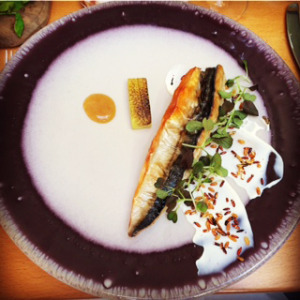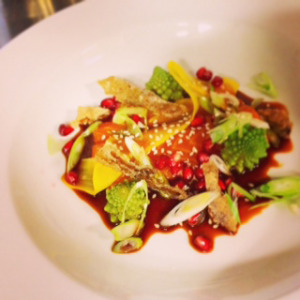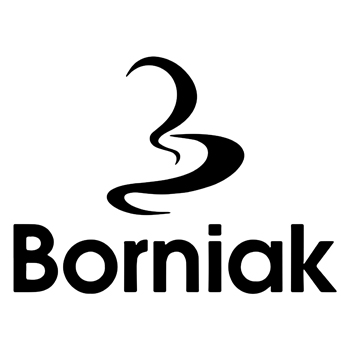Perfect Plating with Ross Clarke

Of course it’s important that a plate of food tastes delicious. But it also needs to look the part too. Diners are becoming more and more discerning, and demanding, when it comes to food presentation, so you need to give some serious thought to how you’re going to plate up your dishes.
Having worked in some of the country’s top kitchens, including The Fat Duck, creative development chef Ross Clarke knows a thing or two about making food look as good as it tastes.
“The first rule is that you should never have anything on the plate that isn’t edible,” he says. “You want the plates to be clear at the end.
“And you should be able to able to eat from one place and get a piece of everything in one go.
“You need to think about the size of the pieces that you put on the plate. You should be able to get a piece of everything on your fork or spoon, and then into your mouth without it being a struggle.
“You always have to plate quite quickly, and the secret is learning to plate so everything looks like it is meant to be there. It should look natural and not contrived. That’s something that takes time to learn though and really only comes with practice.”
According to Ross, ensuring that the dish doesn’t look flat is another way to enhance the visual appeal.
“You need to get some height on the plate,” he says. “Not big stacks in the middle of the plate, but using something that’s maybe 1cm high, and something else that’s 2cm. Never more than 3cm though.”
 In the past, the main ingredient was usually placed in the middle of the plate, with accompaniments arranged in circles around it, but Ross says this is changing.
In the past, the main ingredient was usually placed in the middle of the plate, with accompaniments arranged in circles around it, but Ross says this is changing.
“There’s the old school rule of plating that nothing should be within 2cm of the rim of the plate,” he says. “But the new style is plating at 7 o’clock. So if you imagine the plate as a clock face then you put everything in the corner at 7 o’clock, and then putting a streak or something across the rest of the plate, even so it goes off the side.
“You don’t have to plate dead centre any more.”
The choice of plate is also very important, as the colour can actually influence the way that you taste the food.
“Your safest option is always a big, flat, rimless white plate,” says Ross. “There’s nothing taking your eye away from the food.
“Coloured plates are difficult because they change your perceptions. There has been research and the results are fascinating.
“Never use a blue plate – they make you eat less. A yellow plate will make the diner think that the food is bland, while a red plate will give the impression that the food is spicy.
“That’s why people tend to stick with white and black.
“The colour should come from the food, not from the plate.”
Even the cutlery you choose can make a difference.
“Everything is a conscious decision,” says Ross. “And it can affect the way the customer views the dish. Whether you use silver ware, or a mother-of-pearl spoon for caviar, or wooden knife and fork if you’re serving on slate so you don’t get that scraping noise – it all makes a difference.
“Usually you have the cutlery at room temperature but you can play with people by changing that too.
“I had a dish that was a fondant – which you would usually expect to be warm, but it was ice cold. The sauce it came with looked like it was going to be warm because it was steaming, but that was liquid nitrogen. But the cutlery was warmed. Visually it looked like it was going to be warm, and the warm cutlery added to the perception, but then we played with them by actually serving something that was cold.”
 Just like most aspects of the industry, plating is subject to changing trends and Ross has seen the fashions change over the years.
Just like most aspects of the industry, plating is subject to changing trends and Ross has seen the fashions change over the years.
“In the early 80s everything was scattered, but then the late 80s and early 90s it was all about height.
“You’d build these enormous stacks and then watch the poor waiters and waitresses trying to carry them without letting them collapse. You’d have to use herbs and things to make all the layers stick together.
“After that it was the time of precision with perfect cylinders and drops everywhere.
“Now it’s about trying to make everything look natural, like making it look like a forest if it’s a pigeon dish, or like the seaside if it’s a fish dish. There’s a whole thing of going back to nature.
“I think that the style of plating will continue down this natural route. At the moment it’s natural but minimalistic but I think in the future it will go towards a more sensory dining experience.”
And the one piece advice Ross would give to aspiring chefs learning to plate?
“It’s all about practice, practice, practice,” he says.
For more information about Ross Clarke and his work visit www.rossclarke.co.uk.











